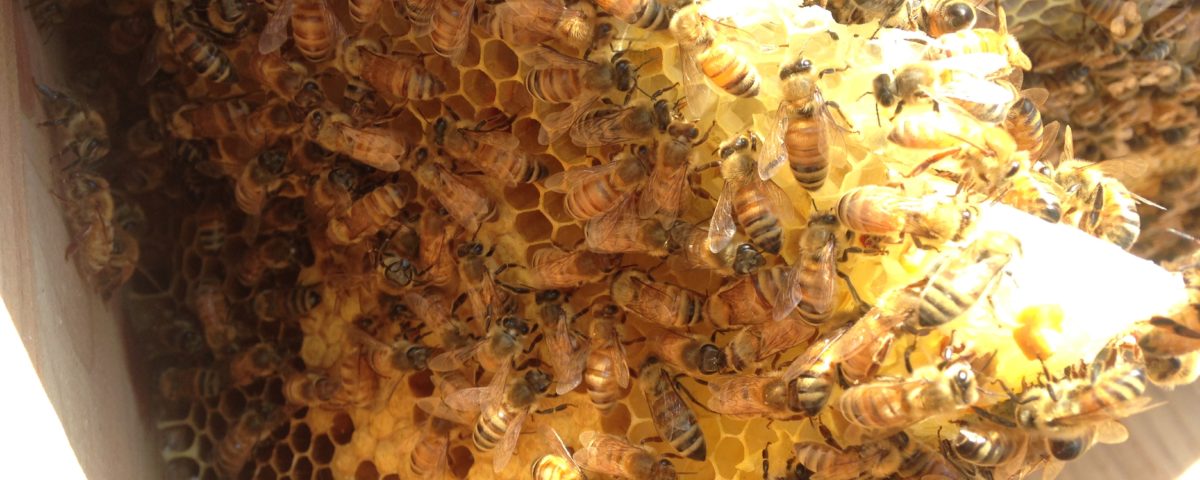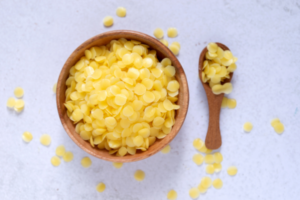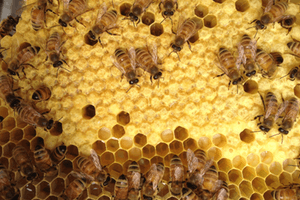- All-In-One Beekeeping for the Bees
- +1-608-728-8233
- info@beepods.com
Sustainable Bee Products for You

Let’s be honest, isn’t everyone’s favorite part of opening presents on Christmas morning when they get to see what’s in their stocking? The stocking is basically a small bag of presents personalized all for you. It is mainly stuffed with an endless supply of things you don’t need, but it is always fun to open. Imagine if your stocking had included honey lip balm, a beeswax candle, and honey sticks, but you found out that honey bees died as a result of that product being made.
There is a big problem with unethical beekeeping and the unethical methods of harvesting honey, propolis, royal jelly, beeswax, and more. Honey bees need all of these things to survive:
- Honey is their primary food
- Pollen is their main protein source
- Beeswax to construct combs

- Propolis is used as “bee glue” for hive building and blocking light
- It is anti-inflammatory
- Used an an antifungal
- Helps in overall healing
- Royal jelly: superfood for the baby bee and queen bee.
Honey
Believe it or not, there are ways that you can harvest honey sustainability. Having endless sources of honey at your disposal can be exciting, but many beekeepers who have this mindset have unrealistic expectations with how much honey they can take. Bees do not make honey all year round, in fact, it takes hundreds of honey bees ( around 556 bees, 2-3 weeks to be exact) multiple weeks just to make one pound of honey so if you are planning on taking all of their food, they will not survive.
If you want to be cautious about how much honey you are taking, you have to keep in mind a few things. Do you have a full – sized colony and how much honey are your bees making? On average, you want to try and leave about 100 pounds of honey for a full-sized colony.
If you are planning on filling your stocking with honey products for next year, make sure you check labels to find sustainably sourced products and companies so you are not supporting unethical beekeeping practices.
Sustainable Brands:
- Beepods (of course)
- Equal Exchange Organic Clear Honey
- Hilltop Honey
Brands To Avoid:
- Aldi Honey
- Asda
- Lidl Honey
BeesWax
Beeswax is very versatile. You can make so many different items like soap, fire starter, balms, candles, furniture polish, and more. Since it is such a widely used product, we need to be careful about how we harvest it and how much of it we take – just like honey. In order to consider this a sustainably harvested product, people must do it in a way that protects the bees and the hive as much as possible.

Harvesting beeswax from a natural hive in the wild is more invasive than harvesting from a hive that you have been keeping. Beekeepers are able to design their hives to be accessible to retrieve beeswax at appropriate times – harvesting occurs heavily between the months of June and September because of weather conditions. When collecting your wax, it is crucial that you separate any honey that may have been in there as well so you can properly harvest the two.
Always keep in mind the integrity of the hive when you are harvesting beeswax. Maintaining the integrity of the hive means not completely ignoring your hive, making sure everything is running smoothly, keeping them safe, and making sure your bees have everything they need. An example being how you harvest beeswax – harvest away from the hive and make sure the wax is cleaned and frozen to destroy any contaminated elements.
Sustainable Brands
- Beepods
- Beeswaxco
- Itemerie
Royal Jelly
Royal jelly isn’t used in products as much as honey or beeswax, but it is still prevalent in many products. There are jelly masks, concealer kits, and lots of moisture creams. Royal jelly has been highly sought after even in traditional Chinese medicine. It has been thought to promote vitality, maintain youthful energy, and lengthen your life
Royal Jelly is not easy to come by. It’s made from secreted glands in the heads of worker bees in order to feed all of the larvae – it is commonly known as mother’s milk (and we know that is sacred)! It is a protein-rich extraction that is necessary for the lives of larvae and their development. The larvae are fed royal jelly for the first three days of their life.
In order to produce this royal jelly artificially, the colony must be stimulated to believe that there is no queen and special frames must be inserted into the hive so the bees believe they are feeding many queens. This is no easy process. A well managed hive can produce about 500 g of royal jelly within a 6 month span.
Overall, the production and harvesting of royal jelly, propolis, honey, and other elements are unsustainable if you are not careful and educated. We do not recommend buying products with royal jelly in them, and if you are to buy other bee products, make sure you do your research and find sustainably sourced products and companies!
Happy Holidays!
Elizabeth Allon
Latest posts by Elizabeth Allon (see all)
- Short But Mighty: The Stages of Life - January 26, 2022
- Honey Bees Vs. Highways - January 19, 2022
- 4 Ways to Save The Bees in 2022 - January 12, 2022



